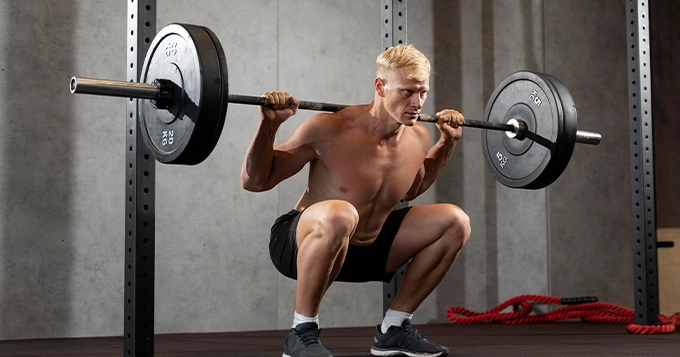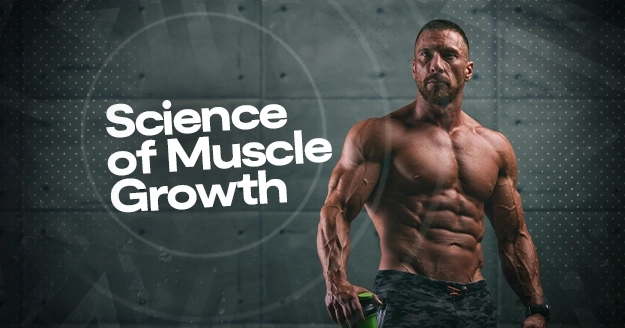In the world of fitness and wellness, building muscle is a common objective for many enthusiasts. To create an effective strength training program, it’s essential to comprehend the science behind muscle growth. This article explores the fundamental principles and professional strength training tips that contribute to maximizing muscle growth through evidence-based methods.
The Physiology of Muscle Growth:
Muscle growth, or hypertrophy, happens when individual muscle fibers enlarge. Multiple factors, including mechanical tension, metabolic stress, and muscle damage, influence this process.
Mechanical tension happens when the muscles are subjected to resistance, such as lifting weights, which triggers a cellular response that leads to muscle growth. Metabolic stress, which causes a burning sensation during high-repetition sets, releases anabolic hormones that contribute to muscle growth. Controlled muscle damage, induced through resistance training, initiates the repair and rebuilding process, resulting in stronger and larger muscles.
To optimize muscle growth, effective strength training strategically integrates these factors, stimulating muscle fibers in a targeted and progressive manner.
Progressive Overload
The main idea behind muscle growth is called progressive overload. It involves gradually increasing the amount of stress put on muscles over time. This can be achieved by lifting heavier weights, doing more repetitions, or changing other aspects of your workout. By consistently challenging your muscles in this way, they adapt and grow larger and stronger.
One of the best weight lifting tips you can get is to have a well-designed workout plan that considers your fitness level, goals, and ability to recover. This approach helps prevent plateaus in your progress and ensures that you’re constantly pushing yourself to new heights.
Nutritional Support
One of the most important workout tips to build muscle is to focus not just on the exercise aspect but also on your nutrition. Both exercise and nutrition are equally crucial for hypertrophy.
Protein is essential because it contains the amino acids needed for muscle repair and growth. Foods like eggs, dairy, lean meats, fish, legumes, and plant-based proteins are all excellent protein sources. Consuming enough protein to support muscle growth is crucial, but the exact amount will depend on factors like age, weight, and activity level.
In addition to protein, a balanced diet that includes carbohydrates and healthy fats provides the energy needed for intense workouts and supports overall health. Staying hydrated is also vital for optimal muscle function and recovery. If you’re trying to build muscle, work with a nutritionist to have a personalized meal plan tailored to your specific needs and goals.
Adequate Rest and Recovery
Contrary to popular belief, muscles don’t grow during workouts. Instead, growth happens during the recovery phase. Getting enough rest and recovery is just as important as working out. This includes getting enough sleep, allowing your muscles to recover properly, and avoiding overtraining.
Overtraining can lead to fatigue, a higher risk of injury, and hindered muscle growth. To prevent this, it’s a good idea to structure your training program with built-in rest days. You can also help the muscles recover by using techniques like foam rolling, stretching, and massage. It’s also essential to listen to your body and adjust your workout intensity accordingly to promote long-term sustainability and optimal results.
Varied Training Modalities
This next beginner weight lifting tips for building muscle effectively is to use a variety of exercises. This means combining compound and isolation exercises to target different muscle groups and movement patterns. Compound exercises, like deadlifts, squats, and bench presses, work multiple muscle groups simultaneously, which is efficient and helps activate more muscles overall.
While compound exercises are important, isolation exercises can also be helpful, especially if you have weaknesses or imbalances in certain muscle groups. By including a mix of both types of exercises, you can improve muscle symmetry and prevent plateaus by introducing new challenges to your body. This well-rounded training approach is essential for comprehensive muscle growth.
Consistency and Patience
The ultimate strength training tips is being consistent and patient. Building muscle takes time and requires consistency. To see long-term results, it’s crucial to create a strong training program and stick with it. Setting short-term and long-term goals can push you to stay focused and motivated. Keeping track of progress and celebrating small wins can also help you stay on track and feel encouraged. Remember, muscle growth is a gradual process, so patience and persistence are key.









